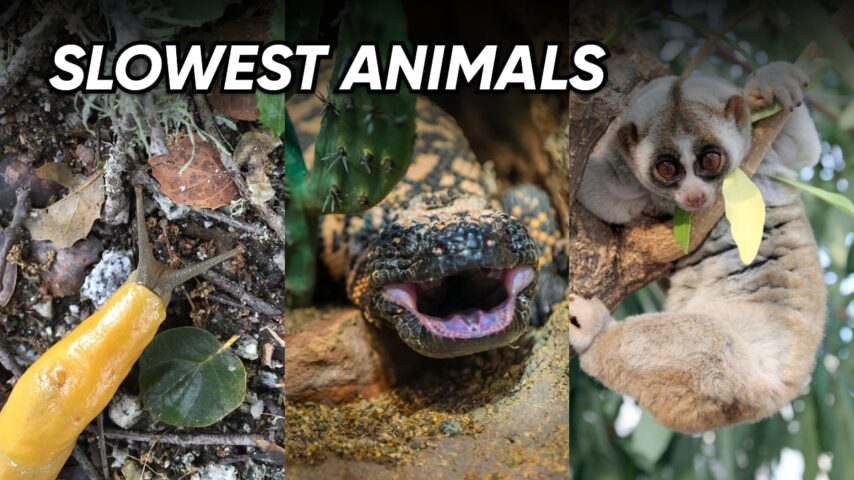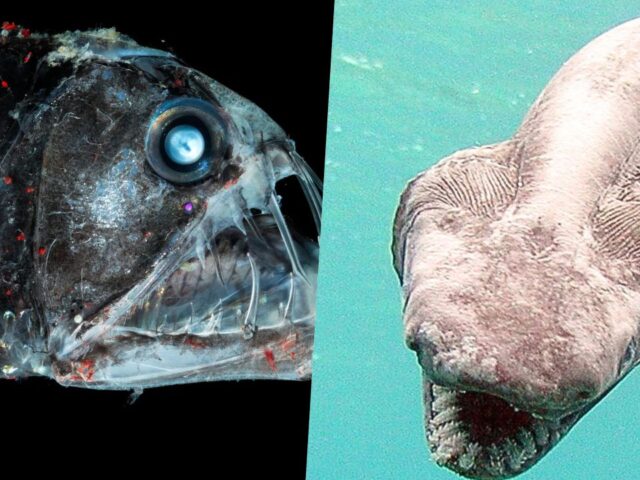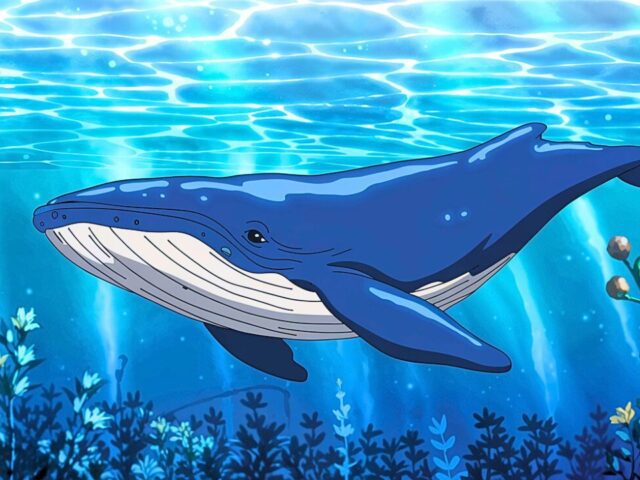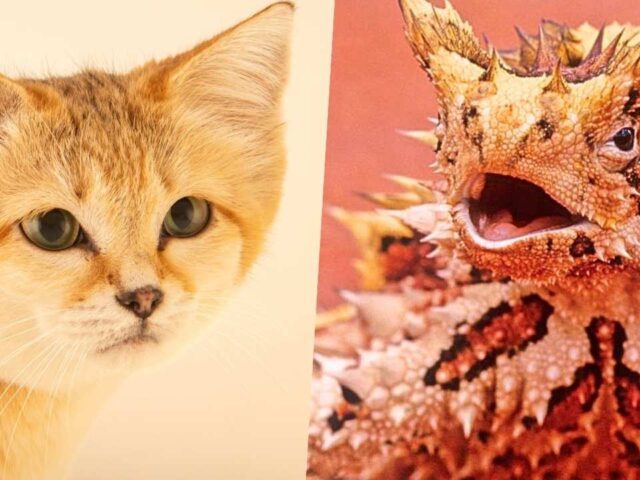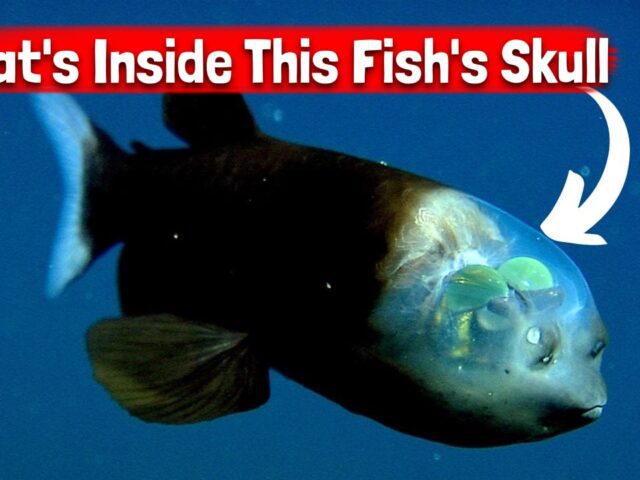Animals come in all shapes, sizes, and speeds. While some creatures are known for their lightning-fast movements, others take life at a much slower pace. In this article, we’ll talk about 10 slowest animals on Earth. Let’s begin.
Table of Contents
1. Three-toed Sloth

The three-toed sloth is often considered the poster child for slow-moving animals. These tree-dwelling mammals are found in the tropical rainforests of Central and South America. They move at an incredibly slow pace of about 0.15 miles per hour on the ground. In trees, where they spend most of their time, they can reach speeds of up to 0.17 miles per hour.
Three-toed sloths have adapted to a slow lifestyle due to their low-energy diet of leaves. Their slow metabolism helps them conserve energy, which is crucial for survival. Interestingly, their slow movement also serves as a defense mechanism. Predators often have trouble spotting sloths because they blend in with the surrounding foliage and move so slowly that they appear to be part of the tree.
Another fascinating fact about three-toed sloths is that their fur often hosts algae, which gives them a greenish tint. This further aids in camouflage and provides additional nutrients to their diet when they groom themselves.
2. Giant Tortoise

The giant tortoise, most famously found in the Galapagos Islands, is another contender for the title of the world’s slowest animal. These massive reptiles move at a speed of about 0.17 miles per hour on land. Their slow pace is primarily due to their heavy shells, which can weigh up to 919 pounds in some species.
Despite their slow speed, giant tortoises are known for their longevity. Some individuals have been recorded to live over 100 years in the wild. Their slow metabolism and peaceful nature contribute to their long lifespan.
Giant tortoises play a crucial role in their ecosystem. As they move slowly through their habitat, they help disperse seeds and shape the landscape. Their slow-moving nature has also made them vulnerable to human activities, and conservation efforts are ongoing to protect these gentle giants.
3. Garden Snail

Garden snails are common in many parts of the world and are known for their incredibly slow pace. These mollusks move at an average speed of about 0.03 miles per hour. Their slow movement is due to their method of locomotion, which involves secreting a layer of mucus and using muscular contractions to glide along surfaces.
Despite their slow speed, garden snails have some impressive abilities. They can climb vertical surfaces and even move upside down, thanks to their sticky mucus trail. This slow but steady movement allows them to conserve energy and navigate their environment effectively.
Garden snails are hermaphrodites, meaning each individual has both male and female reproductive organs. This adaptation increases their chances of reproduction, which is crucial given their slow movement and vulnerability to predators.
4. Starfish

Starfish, also known as sea stars, are marine animals that move at a glacial pace of about 0.06 miles per hour. These echinoderms use hundreds of tiny tube feet on their underside to crawl along the ocean floor.
The slow movement of starfish is partly due to their unique body structure. They lack a centralized brain and instead have a complex nervous system spread throughout their body. This allows them to move in any direction and even regenerate lost arms.
Despite their slow speed, starfish are effective predators in their marine environments. They use their slow, steady movement to sneak up on prey such as clams and oysters. Once they reach their target, they can use their strong arms to pry open shells and digest their prey externally.
5. Dwarf Seahorse

The dwarf seahorse holds the title of the world’s slowest-swimming fish. These tiny creatures, found in the Gulf of Mexico and parts of the Caribbean, swim at a speed of about 0.01 miles per hour. Their slow speed is due to their unique body structure and method of propulsion.
Unlike most fish that use their tails for swimming, seahorses use a small fin on their back to propel themselves through the water. This fin can beat up to 35 times per second, but it doesn’t generate much speed. Instead, it allows the seahorse to maneuver precisely in its environment.
Dwarf seahorses are masters of camouflage, able to change color to blend in with their surroundings. Their slow movement complements this ability, making them nearly invisible to both predators and prey.
6. Banana Slug

Banana slugs, named for their yellow color and banana-like shape, are among the slowest land animals in the world. These gastropods move at a speed of about 0.000023 miles per hour, or about 6.5 inches per minute. They are found in the coastal forests of North America’s Pacific Northwest.
Like their snail cousins, banana slugs move by secreting mucus and using muscular contractions. This mucus serves multiple purposes: it helps them move, keeps their skin moist, and even has anesthetic properties that deter predators.
Banana slugs play a crucial role in their forest ecosystems. As they slowly move through the forest floor, they help break down dead plant material and spread seeds and spores. Their slow pace allows them to thoroughly process the organic matter they consume, contributing to the forest’s nutrient cycle.
7. Koala

While not as slow as some of the other animals on this list, koalas are known for their leisurely lifestyle. These Australian marsupials move at a speed of about 0.3 miles per hour on the ground. In trees, where they spend most of their time, they can move slightly faster but still maintain a slow pace.
Koalas’ slow movement is largely due to their diet and metabolism. They feed almost exclusively on eucalyptus leaves, which are low in nutrients and high in toxins. To conserve energy, koalas have adapted to move slowly and sleep for up to 20 hours a day.
Despite their slow pace, koalas are excellent climbers. Their strong limbs and sharp claws allow them to move efficiently through the trees, where they find food and safety from predators.
8. Gila Monster

The Gila monster is a venomous lizard indigenous to the southwestern United States and northwestern Mexico. While it can move quickly in short bursts when threatened, its typical speed is about 0.18 miles per hour. This slow pace is partly due to its heavy body and short legs.
Gila monsters are one of only two lizard species in the world that are venomous. Their slow movement is compensated by their powerful venom, which they use for both defense and hunting. They spend up to 95% of their time underground or in burrows, emerging mainly to feed.
Despite their slow speed, Gila monsters are effective predators. They have an excellent sense of smell and can detect prey from a distance. Their slow metabolism allows them to survive on just a few meals per year.
9. Manatee

Manatees, often called “sea cows,” are large aquatic mammals known for their gentle nature and slow movements. They typically swim at speeds of 3 to 5 miles per hour, but can reach up to 20 miles per hour in short bursts when needed.
The slow pace of manatees is due to several factors. Their large, rotund bodies create drag in the water, and they have no natural predators to flee from. Additionally, their herbivorous diet of sea grasses doesn’t require high-speed chases.
Manatees’ slow movement allows them to conserve energy and thoroughly graze on aquatic vegetation. This grazing behavior plays a crucial role in maintaining the health of seagrass ecosystems.
10. Slow Loris

The slow loris is a small primate native to Southeast Asia. True to its name, it moves at a slow pace of about 1.2 miles per hour. This nocturnal animal’s slow movement is part of its hunting strategy and defense mechanism.
Slow lorises move deliberately and quietly through the trees, using their slow pace to sneak up on prey such as insects and small vertebrates. Their slow movement also helps them avoid detection by predators.
Interestingly, slow lorises are among the few venomous mammals in the world. They have a toxic bite, which they use for defense and to paralyze prey. This venomous capability, combined with their slow and stealthy movement, makes them unique among primates.
These slow-moving animals remind us that in nature, speed isn’t everything. Each of these creatures has adapted to its environment in unique ways, proving that slow and steady can indeed win the race for survival. Their leisurely pace often plays a crucial role in their ecosystems, contributing to biodiversity and ecological balance.

